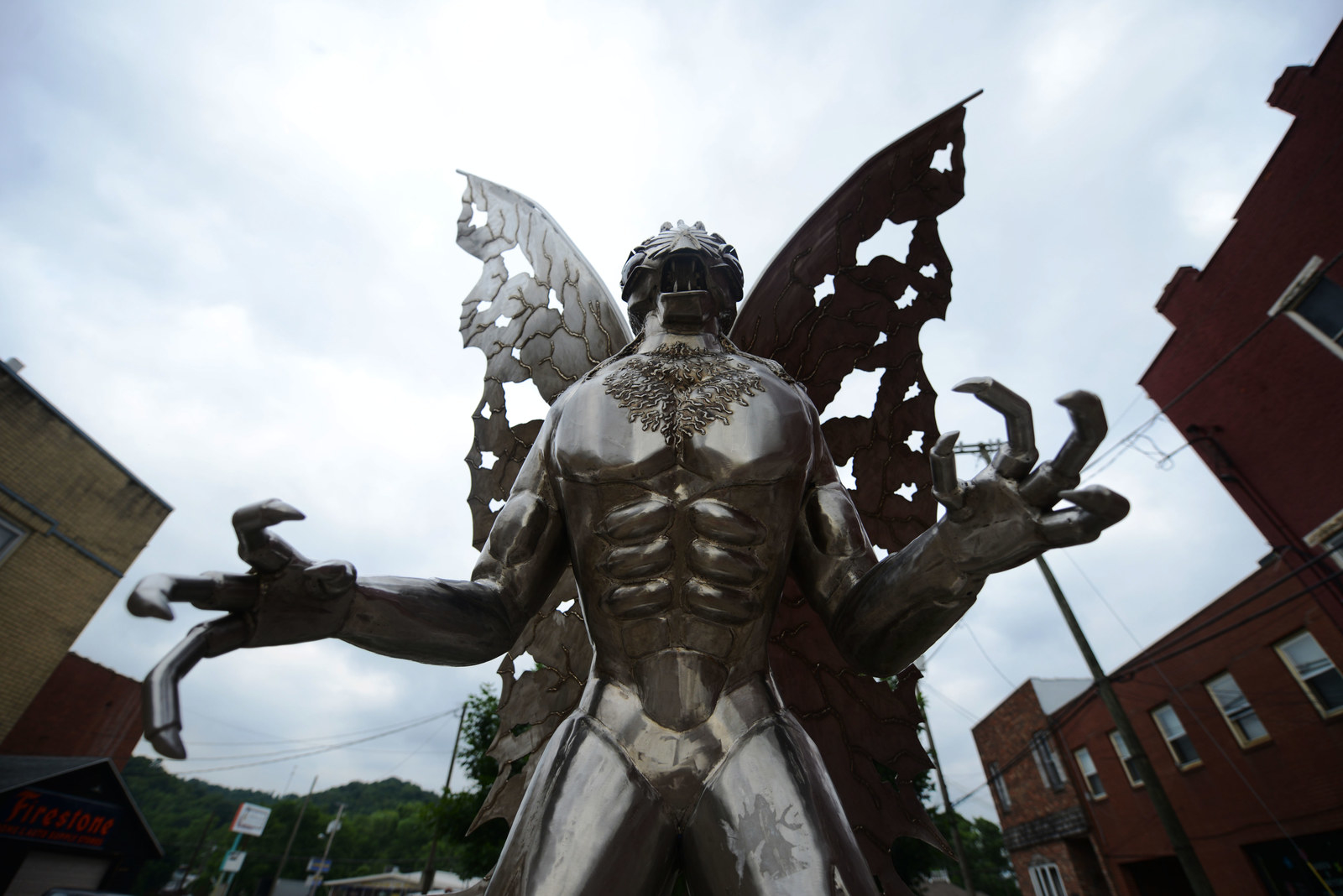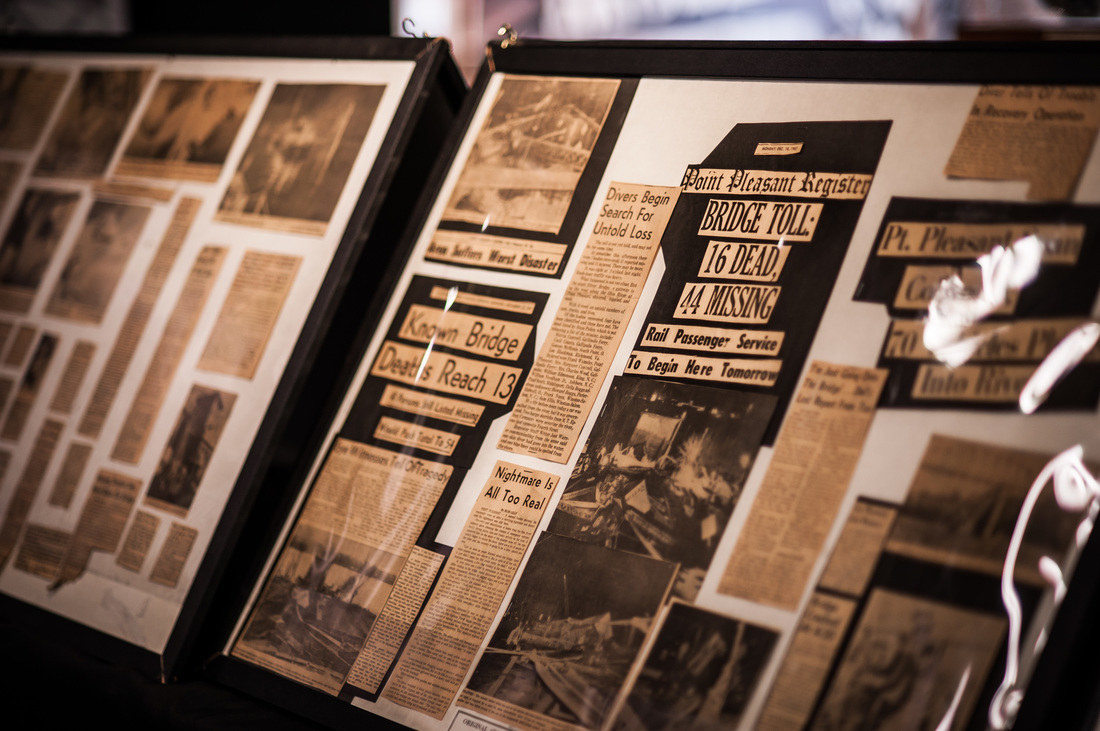I was in a dark place, alone in my room and hunched over my laptop, when the Mothman flew into my life. I was living in my parents’ house in Oklahoma at the time. I had just lost my full-time job in New York City, so I was subletting my shoebox in Brooklyn until I found another gig.
Depressed and directionless, I passed my days on YouTube, revisiting Real Housewives drama and clips of classic anime fights. While in a pit of my listless despair, I came across an odd YouTube video about a creature that had terrorized the small town of Point Pleasant, West Virginia, in the ’60s. It was in that moment that my obsession with the Mothman and with cryptozoology — the search for and study of creatures like Bigfoot and the Loch Ness Monster — was born.
We in the Mothman fandom have come to think of him as a mascot for the absurd, the misunderstood, and the queer. His ascent is similar to that of the gay Babadook, a phenomenon that took over pride season this year — for the uninitiated, he was the creature in the top hat with long claws whom you might have seen vogueing in parades across the country. As the world around us seems to descend into political and environmental chaos, Mothman and his motley crew of monsters have become queer icons — much to some people’s confusion. But their rise makes perfect sense when we look at our histories.
Oh, so you think queer people are monsters? We’ll show you monsters.
Where I’m from, a small town in the middle of nowhere, the gay man was the bogeyman. He was constantly waiting to prey upon the hapless straights in their locker rooms, salivating at the prospect of converting them to the gay dark side with his bite. All things evil and repulsive were his domain — report cards, emotions, curfews, and books, to name a few. All these things were gay, because they were bad.
If you were suspected of being The Gay, you were met with proverbial torches and pitchforks. I was one such suspect, singled out for my swishiness, my lisp, and my admission that I kind of enjoyed “Breakaway” by Kelly Clarkson, a major tactical blunder. I found myself hiding in the shadows of the auditorium behind a stage curtain during lunch to avoid torment. I didn’t feel particularly powerful at the time, but the fact remained: People hated me because they were afraid of me.
Like many other young queer people, I rooted for the villains in Disney movies, who were often coded to have traits similar to mine, like Scar’s dripping sarcasm or Jafar’s fondness for eyeliner. The heroes seemed to have more in common with the people that made my life miserable. They always ended up in a heterosexual relationship, of course — their reward for beating down the queer baddies who had dared to rise above their station. The villains, meanwhile, were always sent back to where they belonged: in hell, or the at bottom of the ocean, or hidden away in a lamp. Out of sight.
Now, when LGBT rights are under attack and the future is anything but certain, there has emerged among some queer people a renewed interest in drawing strength not from institutions, which have largely failed us, but from our countercultural roots, our historic defiance of norms. Oh, so you think queer people are monsters? We’ll show you monsters. And this time, no one’s locking us back in a cage.
According to Mothman lore, a married couple and three of their friends were the first to report a sighting of the Mothman in a wildlife refuge. They ran to the Mason County courthouse and said they saw an animal that stood over 7 feet tall with a black furry body, massive featherless wings, and glowing red eyes. The five were allegedly interviewed in separate rooms, but gave matching descriptions of what they had seen — a beast that had leapt vertically into the sky without flapping its wings.
The townspeople were so shaken by this report that they took up arms to track down Mothman and kill him. But he was nowhere to be found.
It was later speculated that the Mothman was a creature of prophecy. A year after he was sighted, a bridge collapsed in Point Pleasant and killed 46 people. This theory was later immortalized in the film The Mothman Prophecies, which portrayed Mothy as a ChapStick-loving creature alongside Richard Gere and Debra Messing. So, you know. Gay.

In his own small way, he was indeed a creature of prophecy for me — a harbinger of a new era where I was deeply obsessed with dark YouTube. I watched that one Mothman video and fell down an internet rabbit hole into an online underworld of the macabre. This world was peopled by serial killers, cannibals, conspiracy theorists, and cryptids — creatures like Nessie and Bigfoot and la chupacabra that defy taxonomy and always show up as blurry in photos. This is where the Mothman lives.
Under his wing, I wolfed down listicles of the world’s most notorious cult leaders, conspiracy theories about the government hiding evidence of aliens from us, and ghost stories that kept me awake for hours. All of these videos were accompanied by creepy music and skillful narration that struck the perfect balance between cheesy and deathly serious.
It was in this world that I met other cryptids, or cryptozoological creatures, and I became a fan of their work as well. Among my favorites is the Flatwoods Monster, another West Virginian cryptid who presented a look that left the three schoolchildren and one teacher who saw her gagged for life. Standing at 10 feet tall with long claws and a metallic body, the oddest thing about this cryptid might be her long skirt and spade-shaped collar.
In this pantheon are a number of other legends, like the Jersey Devil, a bipedal creature described as a kangaroo-like creature with bat wings, a goat head, and a forked tail. The backstory is crazy — the Jersey Devil is said to have been the cursed 13th child of a woman known as Mother Leeds. Shortly after the Jersey Devil was born, it killed the midwife and scurried up the chimney to escape. As one does.
But Mothman always remained the number one cryptid in my heart.
I understand why so many gay men see themselves in pop divas. It’s a sentiment I share myself. We have, after all, been historically shamed for expressing vulnerability, femininity, and sexuality. The fever dream of tapping into those things and drawing power from them is inToxicating. It’s what keeps us invested in our queens through their highs and lows, and what compels us to overspend on their exorbitantly priced merch: They present a power trip that we can easily access. They are us, victorious.
Pop stars sell us a fantasy of triumph — but so do monsters. It’s just that the concept of victory, what it looks like and how it’s defined, is a little different.
This Tumblr post with over 50,000 notes sums up the sentiment well: Queer people, finally fed up with being called villains, decide to reclaim cryptids as their own. It’s a delicious subversion of the rhetoric that has historically been used against us: a reclamation, a reappropriation, a hijacking.

Then there’s this one, which depicts a marriage ceremony with the Mothman as the groom, making moth noises instead of saying his vows, putting a hilarious twist on a traditional institution.
That joyful spirit of revolution explains why some people have even gone so far as to make fan art of the Mothman. Much of which, honestly, belongs in the Guggenheim.
While there’s been a long tradition of reappropriating queer villainy, multiple factors have conspired to make our current era a golden age — and one factor in particular. After the election, it became clear that the White House probably wasn’t going to be lit up in the colors of the rainbow anytime soon.
This partly explains why the gay Babadook became the pride icon of 2017, after being mistakenly labeled as an LGBTQ film on Netflix. The Babadook, a fictional character in the eponymous horror film who terrorized a family's home in Australia, was a fitting metaphor for queer people’s potential roles under the Trump administration: We will be the antagonists.
Queerness has always held up a mirror to mainstream society in order to mock it. Camp has historically drawn from the ridiculousness of the cisgender, heterosexual world to critique and ridicule its oppressive social norms. This obsession with labeling cryptids and monsters as queer, a practice that is in turns nihilist, absurdist, and completely illogical, is a perfect parody of the time we live in.
Right now, in an age of fake news and rampant mistrust in the press, conspiracy theories are being taken dangerously seriously. Pizzagate, Ted Cruz’s father being the JFK assassin, and Sean Hannity’s Seth Rich obsession are all the sorts of theories that should be confined to Mothman’s domain, to the dark underworld of YouTube. But the seal has been broken, and the real monsters — the ones we’re supposed to think are actually the heroes — are out in broad daylight.
This obsession with labeling cryptids and monsters as queer is a perfect parody of the time we live in.
And so queer people do as we always have — we make fun of the dominant culture. When the very nature of truth is in jeopardy, when you have Sean Spicer standing before the nation and making blatantly false claims about size of Donald Trump’s inauguration crowd, why not mock these blatant untruths by asserting something ridiculous and delightful? Why not say that the Mothman is real, and he is your boyfriend?
Sure, there are plenty of gay and queer people who bristle at the prospect of being compared to monsters. I understand where they’re coming from on that front. There’s a long and troubling history of queer people being demonized by mainstream society. More than that, queer people have long been portrayed exclusively as villains in the media, in addition to being villainized in real life. It wasn’t until recently that LGBT representation in film and television has grown more varied and positive. Not everyone is willing to embrace or subvert the evil queer trope.
In the end, memes always reach a point of over-saturation. The shipping of Pennywise the Clown from It with the Babadook marks the end of that meme’s subversiveness. I also suspect that the Mothman will eventually flitter away from his current absurd place in internet culture. That’s just the lifespan of memes at work — they are born on Tumblr or 4chan, spend their adolescence on Twitter, and go to Facebook to die. RIP.
But the great tradition of queer people simultaneously mocking and seeking themselves out in mainstream culture won’t die out anytime soon. Many have found themselves looking to pop stars or fictional characters in movies or in TV shows to find empowerment and strength. I have one such figure as well. Mine just happens to be a little taller than yours.
This essay is part of a series of stories about stans and super fans.

